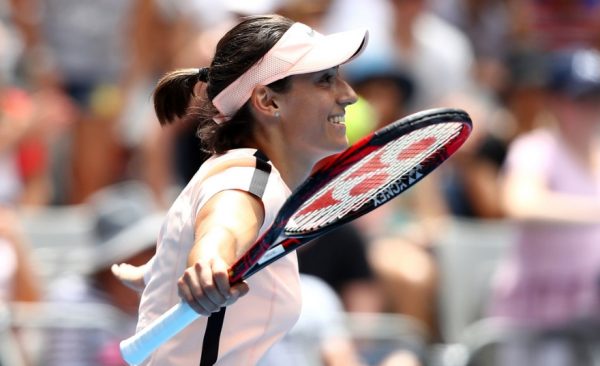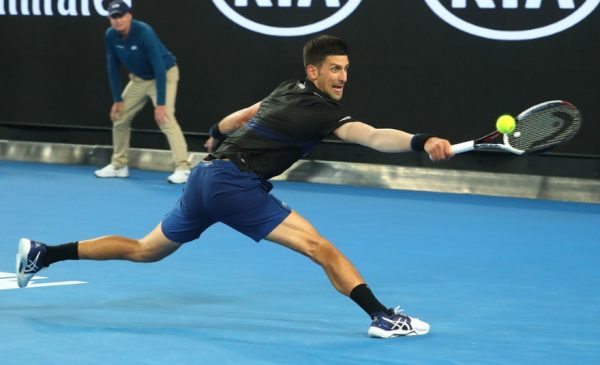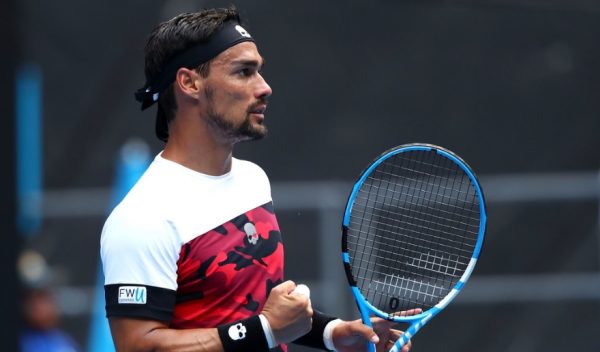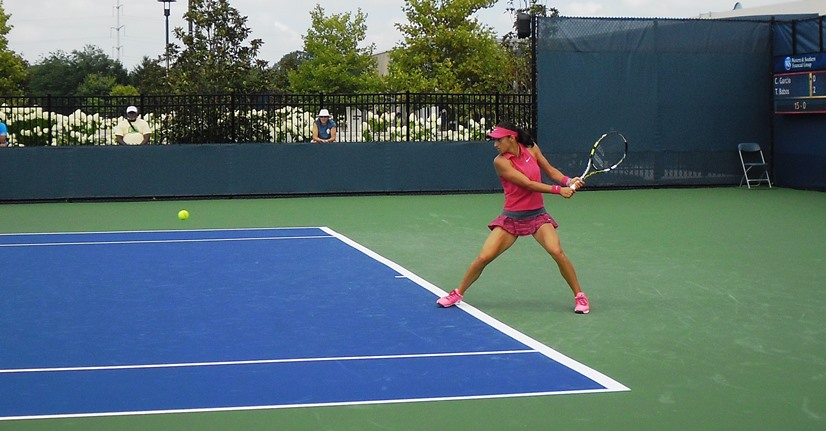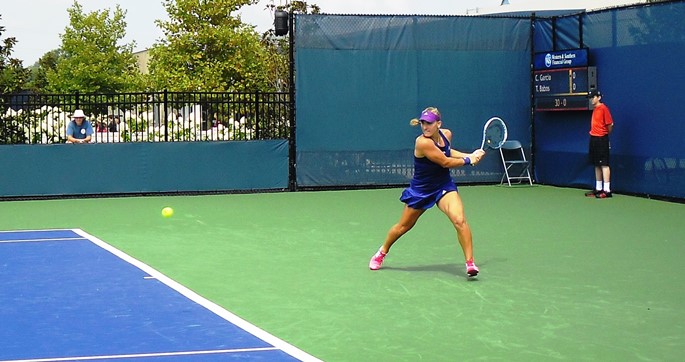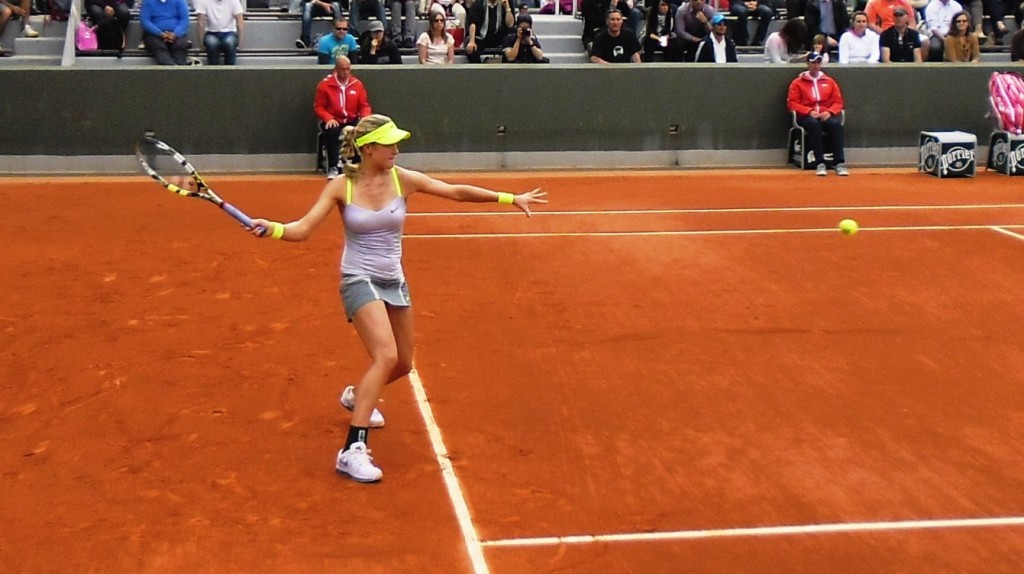I am sure many French tennis fans left Philippe Chatrier stadium disappointed following the come-back win (1-6 6-4 6-4) by Anna Blinkova over Caroline Garcia because they felt that Caro had the match in her grasp only to let it slip away. We tend to exaggerate – and this is not necessarily a criticism – the importance of the last few games, or even the last few points of a match, and reach an overall conclusion based on that limited scope.
On the one hand, it is undeniable that Garcia squandered the lead in the third set, yes. Twice! It is also undeniable that Blinkova deserves some appreciation for her resolve in turning a hopeless situation into a balanced one by the end of the second set.
For fans of Anna, or those who have been following her rise over the last few years closely, the fact that she maintains a positive body language on the court, exuding confidence, and truly “looking the part” in doing so, will not come across as a news flash. I would venture to say that as a 20-year-old, she is as ironclad as tennis competitors come in the mental department. She is constantly tuned-in for the next point. “Now” seems to be the key word for her. That is the case whether the scoreboard shows her leading a set and 4-0, down a set and 0-4, or in the second game of the match.
…or, when she gets completely crushed in the first set (1-6) and begins the second set with a double fault… which was where she found herself on Thursday afternoon against Garcia.
How bad did she get dominated? Garcia blitzed to 3-0 lead, serving 9 out of 10 first serves in, hitting five winners. Blinkova barely got a glimmer of hope when she had a break point at 1-3 down. But Garcia shut that door on that quickly and resumed the one-sided affair until the end of the set. She finished with a flurry, hitting 20 out of her 26 first serves in (77%) which not only gave her free points on return errors but also kept setting her up for the next shot (again, 1-2 punch in effect).
Her game was sparkling clean, making a total of only four unforced errors in the first set, which is a stellar stat considering how much risk she takes on her returns and groundies.
For those who may not have noticed (although it is quite hard not to), Garcia indeed takes the ball extremely early on returns, and often does so continuously throughout the match. She has been doing this for a long time – for example, see my match report from 2014 on her qualifying match in Cincinnati –, it is one of the trademarks of her game. She has great hands so she can pull it off most of the time. Every now and then, as the saying “you live by the sword you die by the sword” goes, it works against her. The first set was a case of the former. She put so much pressure on Blinkova that the Russian would just whack the ball back herself, in an attempt to thwart further assault by Garcia’s penetrating strikes. Naturally, that led to several ‘forced’ errors on Blinkova’s part.
For an example, out of many, of how effective Garcia can be with those aggressive returns, see the 30-15 point in the first game of the second set. Garcia smacks a lunging forehand return flat and deep back to the baseline which sends Blinkova (who hit a fairly solid first serve half a second ago) stretching desperately to her ad side to get the ball back. She does, but it’s short. Garcia moves in and nails the backhand winner to the corner.
In case you want to observe both examples (in other words, examples of living and dying by the sword), fast forward to the 4-2 game in the third set to see three in a row. With Blinkova leading 40-0, Garcia hits two scorching return winners, one forehand one backhand, on two well-struck first serves by Blinkova to get to 40-30. Then, she goes for a third return-winner attempt on another first serve and misses it deep to lose the game. All three returns are hit from at least a meter inside the baseline (she even waits for them on or inside the baseline).
Let me get back to the match and put things into perspective at this point. Here we are, after a lop-sided first set that went Garcia’s way, and Blinkova just committed a double fault to start the second set. Garcia hops to her left and walks to return the next point, full of positive energy. It’s also worth, at this point, to remember the larger context of the match: Blinkova a young qualifier who entered the WTA top 100 only about eight months ago, had stepped on court Philippe Chatrier for the first time in her career to face a seeded French player.
And now back to the 1-6, 0-15 moment:
– Blinkova serves an ace to the ‘T’!
– It is one of her only two aces in the match, her only one in the second set. But it could not have come at a better come!
– She hops up twice (with energy) and pumps her left fist!
– She turns back with a swagger, says “come on,” and gets a ball from the ballkid on the deuce side.
– Then, she rotates to her right with her head up and gets another ball from the other ballkid.
– She struts right back to serve and hits another first serve (wins that point too, but that is not important for now)
The above sequence lasts around 10 seconds. It should be ten seconds that every coach should require their pupil to watch. Not the double fault, not the ace, but rather Blinkova’s body language between the two. A sequence that includes no actual tennis, but one that has everything to do with competitive tennis.
The coach should also ask the pupil, just for good measure, if the woman who just served looks like someone who served a double fault 30 seconds ago after getting pulverized 1-6 by a seeded opponent at a Major.
That’s Blinkova in a nutshell. What counts is “now,” where it counts is “the court.”
Later in that game at 40-30, Blinkova is able to float back deep another aggressive return by Garcia and manages to engage her in a rare rally. Garcia eventually makes the error (long rallies are not exactly her forté). Blinkova yells and makes a fist and pumps herself up further as she struts with even more confidence to change ends. In retrospect, that first game of the second set looms large as one of the turning points of the match.
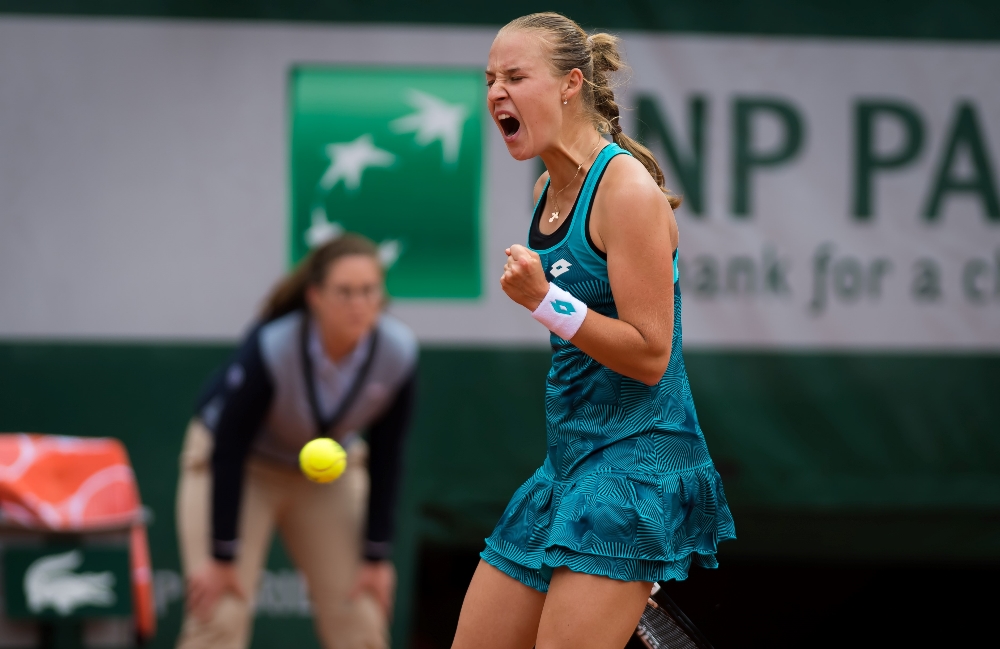
Garcia continues to go for her returns, Blinkova continues to scramble and fight, but the match is now more balanced. More importantly, Garcia has finally cooled down a tad. The biggest difference is on her first-serve percentage which drops down to 52% in the second set, down from 77% in the first. Less first serves results in more returns in by Blinkova, which in return means longer rallies. It is on one such point that Blinkova finally breaks through when she wins the 30-40 point at 4-3 and yells loudly “come oooon” with her fist pumped up high!
Although Garcia breaks back, Blinkova is still able to break right back in the ensuing game because Garcia, and this is where she has to shoulder the blame a bit, makes three backhand unforced errors in a row to go down 0-40, and loses on another backhand miss into the net (though this one was on a deep return by Blinkova) at 30-40.
The more important trend is that since early in the second set, the match has been played more on Blinkova’s terms, unlike in the first set.
Third set begins with yet another double fault by Blinkova (total of four for the match). But this time, there is no ace following it, instead a backhand unforced error that puts her down 0-30. When she double-faults again at 30-40, her second in the game, but fourth and last one for the match, Garcia goes up 1-0. It’s once again full speed ahead for the Caro train.
She goes up 3-0 in the blink of an eye, looking as invincible as she did in the first three games of the first set. She even gets a point to go up 4-0 at 40-30.
And it’s from this point forward that those claiming that Garcia squandered her lead have a point. Because on that point to go up 4-0, the Frenchwoman, who has been playing impeccable tennis since the final set began, makes her first unforced error of the set when she floats a backhand deep. Blinkova eventually breaks Garcia’s serve to get back 1-3.
Just like that, momentum changes, one thing leads to another, and Blinkova wins five out of the next six games to pull the upset. To add salt to the wound, Garcia wins only two points after 4-4, making four unforced errors and a double fault (on match point) on the way.
There is no need for a long conclusion paragraph for this one. It’s a career win for Blinkova and a devastating exit for Garcia. But neither those who give all the praises to Blinkova for this comeback, nor those who place all the blame on Garcia are correct. It’s a bit of both. Blinkova showed how wise (and cool-headed) she is beyond her years in the second set, and Garcia crumbled in the third after a fantastic start to grab an early lead. Ultimately, it was a three-set match that had one brilliant set for each, and one set that was at the same time memorable for one, and forgettable for the other.
Blinkova will face the winner of the Madison Keys vs Priscilla Hon match. It will be the Russian’s sixth match in 11 days, assuming it will be played on Saturday. I am fairly certain that will not matter to Blinkova. She will be tuned-in and ready.

